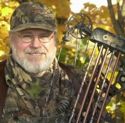Driving Kentucky’s rural backroads during the spring and early summer it’s not uncommon to see this distinctively-marked brown bird darting into brushy fencerows or tangles of vines and honeysuckle at the wood’s edge.
A rather large bird with long tail feathers, the Brown Thrasher (Toxostoma rufum) is a member of the family Mimidae, which includes Catbirds and Mockingbirds.
It is often confused with the smaller Wood Thrush (Hylocichla mustelina), which is also a common native species in Kentucky but somewhat less distributed.
Geographic Range and Distribution in Kentucky
The Brown Thrasher is found year-round in the South, from east Texas, across the lower Mississippi Valley and Gulf Coast to Florida, and up the Atlantic Coast to eastern Virginia.
It’s breeding range is vast, extending from eastern Montana, east across the Great Lakes states to New England, south along the Appalachians to north Georgia, and westward to eastern Colorado.
In Kentucky, the Brown Thrasher is found year-round only in the warmer Jackson Purchase Region, but in the rest of the state, most birds move southward with the onset of cold weather. Thus, in most of Kentucky, the Brown Thrasher is a seasonal visitor, here to breed, nest and rear young.
Size and Coloration
The plumage of the Brown Thrasher is bright reddish-brown, and this distinctive bird has a five-inch, rounded tail, and brilliant yellow eyes.
Its breast is white, with teardrop-shaped dark markings. Its bill is brown, long, and curves downward. Both males and females are similar in appearance.
Fairly large, the average adult Brown Thrasher is more than 10 inches long, with a wingspan of 11 to 13 inches, and weight of about 2.2 to 3.1 ounces
There are two subspecies.
Habitat
In Kentucky, the Brown Thrasher is uniformly distributed in semi-open habitats, with thickets, brush, and dense shrubbery, at the edges of hardwood forests. It is less numerous in the heavily forested mountain counties of eastern Kentucky
In neighborhoods along the rural/suburban interface, the Brown Thrasher may live and nest in areas with many shrubs and hedges.
It winters in areas with dense brush.
Feeding Behavior
The Brown Thrasher forages on the ground, using its bill to flip dead leaves aside or dig in the soil as it rummages for insects. It also perches in shrubs and trees to eat berries and will crack open acorns by pounding on them with its bill.
Diet
Its diet is varied, but more than half of what it eats are beetles, caterpillars, grasshoppers, cicadas, spiders, sowbugs, earthworms, and snails.
Berries and small fruits are a very important part of their diet in the fall and winter when nuts and seeds are also consumed.
Nesting and Reproduction

In Kentucky, Brown Thrashers return from their wintering range in early March.
The male defends his territory by singing loudly from prominent perches. In courtship, he approaches a prospective mate, singing softly. They may pick up leaves or sticks, and present them to each other as if to say, “do you want to nest?”
Their nest is usually two to seven feet above the ground in a dense shrub, vine tangle, the crotch of a low tree, or sometimes on the ground under dense cover.
It’s a bulky structure, built by both sexes, with a foundation of sticks supporting a loose cup of twigs, leaves, weeds, grass, bark fibers, lined with finer materials such as grass or rootlets.
Females lay about four eggs, sometimes three to five. They are pale blue to bluish-white, finely dotted with reddish-brown.
Incubation is by both parents and lasts about 11 to 14 days. Both parents also feed the nestlings and young leave nest about nine to 13 days after hatching.
In Kentucky, most pairs raise two broods a year, with the peak of early clutches in mid-April and the peak of the late clutches in early June, sometimes as late as early July.
Keep an eye out for the Brown Thrasher, a handsome bird that’s a bit shy of approaching traffic, runners or dog walkers out for an evening stroll.

























